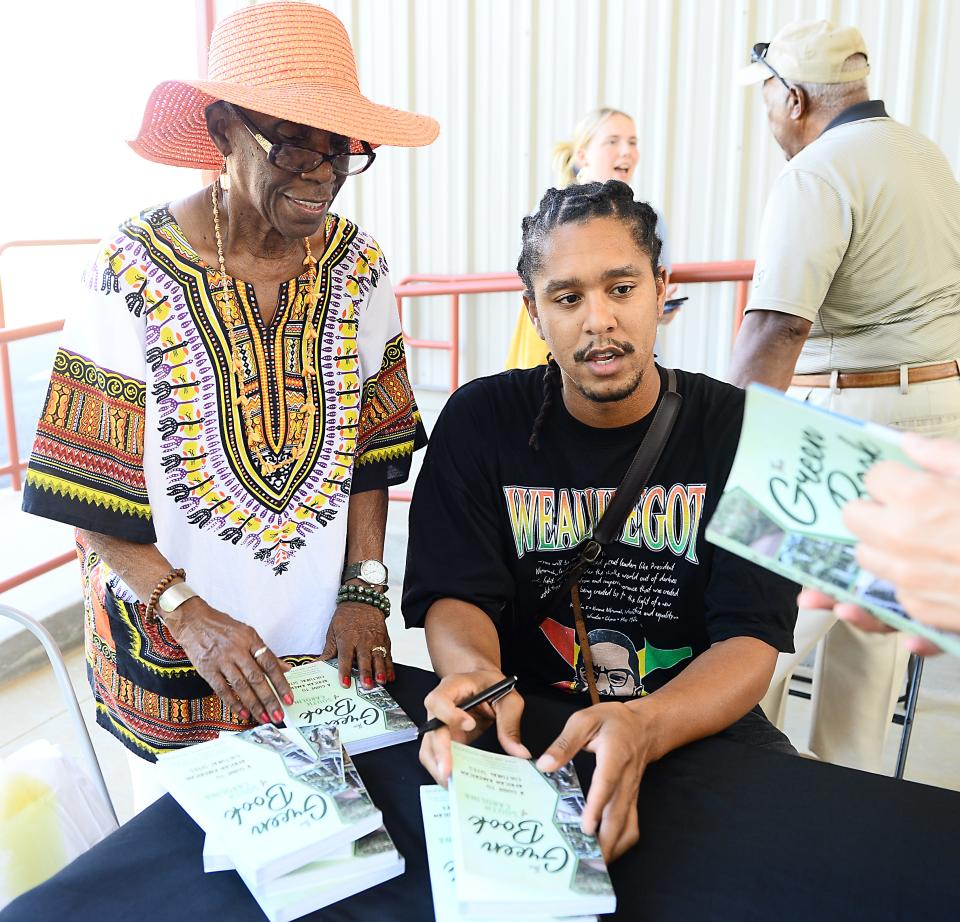Green Book of South Carolina by Hub City Press highlights state's Black history, culture
- Oops!Something went wrong.Please try again later.
Whether you're a Palmetto State native, a frequent traveler around the state or planning to attend a family reunion, the new Green Book of South Carolina can help be your guide.
The new book, which highlights African American history and landmarks statewide, published by Hub City Press, was celebrated Thursday night during its launch at Spartanburg's Fretwell.
"We need to build each other up instead of tearing other people down," said James Talley, the first Black mayor of Spartanburg (1992-2002). "And that is exactly what this book does."
The name of the book and travel-planning tool pays homage to the original Green Book, which was first printed and published from 1936 until the mid-1960s. It was first published by New York postman Victor Green, who wanted to provide an African American travel guide to safe and welcoming locations and establishments.
From GoUpstate: Here's where to see historical Black landmarks in Spartanburg County
The new Green Book of South Carolina started as a mobile app, a project developed by the WeGOJA Foundation and the International African American Museum. The app was first available in 2017. Meg Reid, director of Hub City Press, saw a need for the app to be developed into a book because of accessibility.
"It's so easy to throw in your purse or your car, so I feel like the book is better for people like me who want to use it more spontaneously," Reid said. "The way that I've used it, so far, is by looking to see what is in the town I happen to be in."

There are over 180 cultural sites listed in the book, including 40 in the Upstate and 19 in Spartanburg County.
Historian, documentarian, and community organizer, Joshua Parks, was the chief photographer for the Green Book of South Carolina. Parks found importance in how all of the sites and pieces of the book come together to tell a greater story.
"All of these sites that have been created by African Americans and their decedents were created out of necessity. We didn't have the opportunity to be integrated into the mainstream hospitals, schools, insurance," Parks said. "We didn't have access to basic needs because of racism.
"These sites are special because it highlights Black peoples will and self determination to control their destinies."

Brenda Lee Pryce leads the Spartanburg's African American Heritage Committee, which served as a research pool for the book. For Pryce, the most impactful part of the project was talking about Black history with sources from around the county.
Pryce's favorite listing in the book is the Emancipation Jubilee Flag, which is located in the Spartanburg Public Libraries Headquarters Branch in downtown Spartanburg.
The Green Book of South Carolina can be purchased at the Hub City Bookstore, located in downtown Spartanburg, or online through Hub City Press, for $17.
Brandi Wylie is an intern for the Spartanburg Herald-Journal and Greenville News. Reach her via email at bwylie@gannett.com.
This article originally appeared on Herald-Journal: Green Book of South Carolina highlights state's Black history

